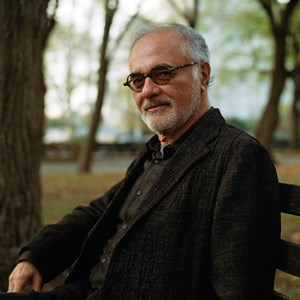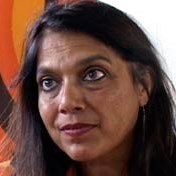Excerpts from an interview with Frontline/World on 10 May, 2007.
Like thousands of Asians, Mahmood Mamdani was expelled from Uganda in 1972, having returned to the country after completing graduate work in the United States. He sought asylum in Britain and eventually moved to New York, where he is the Herbert Lehman Professor of Government and a professor of anthropology at Columbia University.
Mamdani and his wife, filmmaker Mira Nair, spend part of their summers in Uganda, where they have a home. During my trip, the couple spoke to me about their experiences living in the country. Mamdani told me that he noticed a difference between the new wave of Indian immigrants to Uganda, and those who have returned after being expelled.
Nair, who was born in India, and is the director of such movies as ‘Monsoon Wedding’ and more recently ‘The Namesake’, runs a workshop in Kampala called Maisha, which means ‘life’ in Kiswahili. She began the project in 2005 to bring together and train aspiring filmmakers from South Asia and East Africa. Part of the film lab’s aim is to encourage better cross-cultural ties between the two ethnic groups.
Excerpts From an Interview with Mahmood Mamdani
Omar Sachedina: How significant are Asians to Uganda’s economy?
I’m sure, if their contribution was around 20 percent in 1972, it is probably half or less than half of that today. Also, Asians are not that critical in the export-import sector because the largest source of foreign exchange — after foreign aid — is remittances from Ugandans abroad, of which there are very few Asians.
Could there be another expulsion like that of the 1970s?
I don’t think so, partly because there is a vibrant black Ugandan middle class, an industrial class in a sense. And even though about 95 percent of the Asian population in Uganda today is of very recent origin, [Asians] have come here basically in different phases. Phase one was brought in by Amin. These were professionals, even judges.
Phase two — and the most important phase — came after the return of properties in 1986 and the relative openness of President Museveni’s government, and the corruption among public sector officials. Most [Asians], I imagine [during this phase], arrived through corruption, getting access to permits and visas by buying them rather than through the legal application process. But the big difference is that in the period before 1972, the Ugandan Asian population — even though it had been here for nearly a half century — was educated in, worshipped in, played in and lived life in highly racialized institutions.
Schools were racialized. You went to an Indian school or a European school or an African school, as they were called at that time. Playgrounds were racialized; mosques were racialized; temples were racialized. Today that’s not the case. One of the key outcomes of the expulsion is that, no matter how temporary the post-1986 Ugandan Asians think they are — no matter how much they think that this is a launching pad for going to the West — once they give birth to kids over here and the kids go to school, there is no Indian school. You have to go to the same school and read the same curriculum as the vast majority of Ugandan kids. And so there’s a very different socialization process. What comes out of that socialization process is a kid who is far more homogenized and [shaped like the others] and a far more standard product. You get a far more Ugandan kid in a certain way than was the case in the decade after independence.
Is there a difference between the ways Asians who’ve left and come back and those who are newly arriving from India and Pakistan are treating Africans?
Sure, there is a distinction. The pre-1972 Asians who returned are different in many ways. First of all, they are, by and large, wealthy. And the racism is more rampant the lower down the socioeconomic scale you go, simply because those who are wealthy know they’re living a life of privilege because of the wealth that they have. Those whose socioeconomic circumstances or education are no different from that of their Ugandan neighbours, even though they are paid more than two or three times the amount of money [as their Ugandan counterparts], somehow have to convince themselves that they deserve it. This attempt at conviction is a very easy route to racism — to think that they’re better because their skin colour is different, or because they’re from India or whatever.
There’s a second difference also, which is the experience of the expulsion. Those who were expelled and came back later on went mainly to Britain or to the West. They’ve also experienced racism in the West, so they have a different, altered view of the world. And they know what the consequence of racism can be here and what the options are outside.
The fellows who came post-1986 are on a different track. They’ve come from India; they’re on a one-way track; they’re looking to the West, to greener pastures. They have an idealized romance of the West. They think of it as the land of plenty, where anybody can make it, and if they don’t make it, surely their kids will make it!
So there is no hatred fomenting?
I don’t mean to say that there is no friction or tension or resentment, or even hatred, but as to whether that would translate into an expulsion? I don’t think so. Expulsions are not driven by people at the bottom; expulsions are driven by people at the top. You have [to have] a racialized dome of privilege at the top, so the black middle class simply has no room, which is what it was like in 1972. Those are the ingredients of an expulsion, but there’s no such crystallized dome of racial privilege right now. If you look at wealth in Uganda, one would be hard put to say that most of the wealthy are Asian — not very many. At the worst, you can get riots; you may get killings, but I doubt you’ll get an expulsion.
Are you hopeful for Uganda’s economic future?
Uganda’s economy depends on its politics. And the ups and downs are overly determined by politics here. But it’s not simply Uganda. I think you can look at most countries in the region — except for Tanzania, maybe, or Senegal in West Africa — and the big political question is always succession. The moment of succession is the moment of crisis. And that’s not unusual in small countries just out of colonialism, [going through] civil war, succession battles and issues like that.
Excerpt From an Interview with Filmmaker Mira Nair
Omar Sachedina: You come back to your home outside Kampala each summer; have you seen a growing integration between blacks and Asians?
Mira Nair: There’s a much bigger community of Asians in Uganda now. There’s a huge community of Chinese people in Uganda as well. But I don’t always see a happy story, because a lot of Asians in Uganda have no investment at all in this culture. Often, they think of Uganda as a stepping-stone to somewhere else. There is no sentimental attachment of any kind; there is no investment in the future of this country. I fear sometimes that, once again, there will be the separatism that existed in the pre-1970s, when the Indians had their own life, and the Ugandans had their own life — and ne’er the twain shall meet. It was an employer-employee relationship at best. I hope this will not once again become the face of Asians here, where they are the visible minority in charge of the money, you know?
What will prevent history repeating itself?
Time only will tell. But it has been very inspiring to see what the old Asian families — who have left and who have now returned — what they’ve done and how they have put back into the community in a very substantial way. That’s always heartening. But the big Indian diaspora that is coming here, they also have to open their eyes. They have to be encouraged to integrate. That is the greatest lesson; we have to wait and see how it turns out.
Your film school seems to be a good example of fostering cultural exchange in Uganda. Do you think it is helping blacks and Asians to understand each other better?
I don’t think there is anything that will provide more effective union building than Maisha. At least, in the last workshop that I’ve just seen, where we’ve had three Asian women and seven East African candidates — some of them men, and some of them women. We have created a dormitory culture, but one that is totally, intensely creative. Even in the most intense period of 10 days of script writing, students were creating a collaborative script. I was so moved because neither side had experienced this kind of equal, creative interaction before, where each one was assumed to be equal and not guided by the principal that one was Asian or one was black, or because one was ‘muzungu’ [a white person] and the other person was something else.
How is filmmaking different here?
Africans virtually across the continent have grown up on a diet of Indian film, and they understand the form almost subliminally. Also, the money and the expertise are more common between South Asia and East Africa than, say, with Hollywood or with other places where the filmmaking model is much more Western oriented. Many South Asian mentors at the workshop were so energized by the scripts that they were reading, especially from the East African counterparts, that there was real commercial talk about adapting these stories for the Indian context and buying them commercially.




